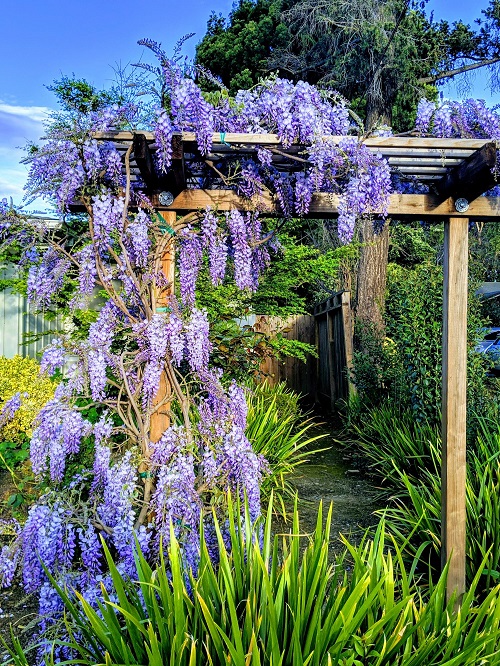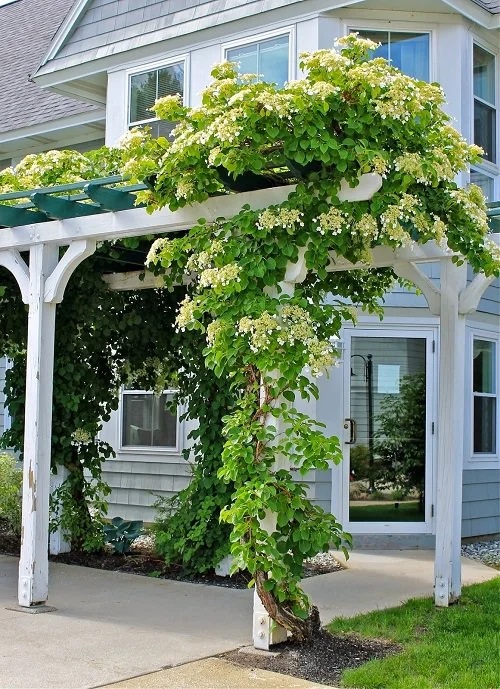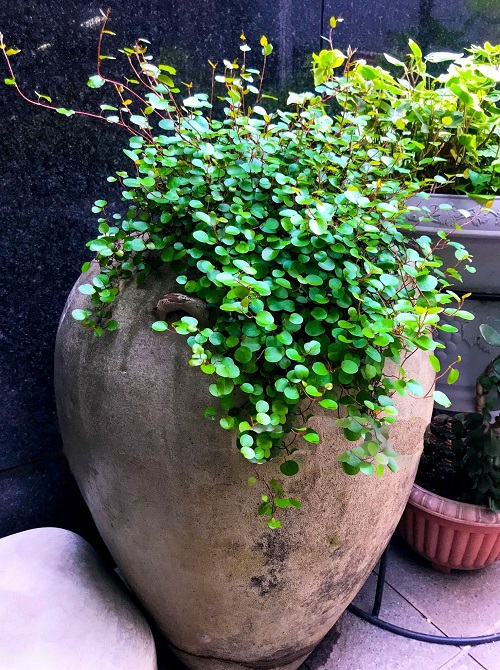Check out the Most Important Tips to Follow When Growing Vines and Climbers to ensure a thriving and flowery garden!
Do you want to ensure optimal growth and maximize the beauty of trailing plants in your garden? Here are some fantastic Tips to Follow When Growing Vines and Climbers.
Check out the Best Succulent Vines and Climbers here
Most Important Tips to Follow When Growing Vines and Climbers
Growing vines and climbers in your garden can add vertical interest, provide shade, and enhance the overall beauty of your outdoor space. Here are some conventional and unconventional tips and methods to consider when growing vines and climbers:
1. Selection of the Right Vine or Climber
The first tip to follow when growing vines and climbers is the get the right plants.
Choose a vine or climber that suits your garden’s conditions, such as sunlight exposure, soil type, and climate. Consider factors like growth habits, mature size, and maintenance requirements.
Go the Unconventional Way: Explore unique and lesser-known vine varieties like Chilean Glory Vine (Eccremocarpus scaber), Cimbing Snapdragon (Asarina scandens), Chocolate Vine (Akebia quinata), and Canary Creeper (Tropaeolum peregrinum) to create an interesting and diverse garden. Look for native or exotic options that can thrive in your specific region.
Check Cool Indoor Vines and Climbers People Usually Don’t Grow here
2. Proper Placement and Support
Determine the location and structure for your vines or climbers based on their growth habit (whether they twine, cling, or need a trellis). Provide sturdy support structures such as trellises, arbors, pergolas, or fences to help the plants climb.
Go the Unconventional Way: Experiment with unconventional supports like old ladders, salvaged gates, or even repurposed sculptures to add artistic and whimsical elements to your garden.
Check out Unique Plant Support Ideas You Must Try here
3. Soil Preparation and Planting
This is the third most important tip to follow when growing vines and climbers.
Prepare the soil before planting by removing weeds, loosening the soil, and add compost, well-rotted manure, or leaf mold to enhance soil fertility and structure. Dig a hole slightly larger than the plant’s root ball, place the vine, and backfill with soil. Water thoroughly.
Go the Unconventional Way: Consider container gardening with vines and climbers. Use large pots or containers filled with a well-draining potting mix, and provide adequate support structures like trellises or obelisks within the containers. This allows for more flexibility and mobility in positioning your plants.
Learn some Great Tips to Rejuvenate Your Old Soil here
4. Watering and Maintenance
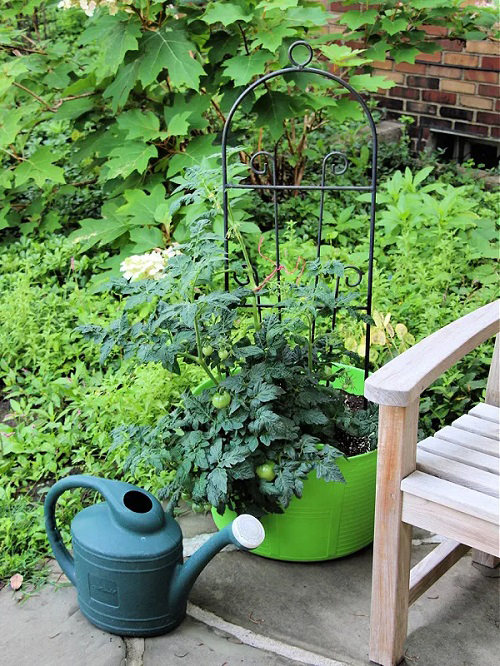
Provide regular watering, especially during dry spells, to keep the soil consistently moist but not waterlogged. Mulch around the base of the plants to conserve moisture and suppress weeds. Prune as needed to shape and control growth.
Go the Unconventional Way: Implement innovative irrigation systems like drip irrigation or self-watering containers to ensure efficient water delivery to your vines. Monitor the plants’ growth patterns and adjust pruning techniques to create unique shapes or designs.
Here are the best ways to water plants
5. Training and Pruning

Train the vines or climbers onto their support structures by gently tying them with soft plant ties or twine. Prune to remove dead, damaged, or overcrowded branches and to maintain the desired shape and size of the plants.
Go the Unconventional Way: Experiment with alternative training techniques like espalier, where vines are pruned and trained to grow in a flat, decorative pattern against a wall or fence. This creates a visually striking feature and maximizes space utilization.
6. Integration with Other Plants
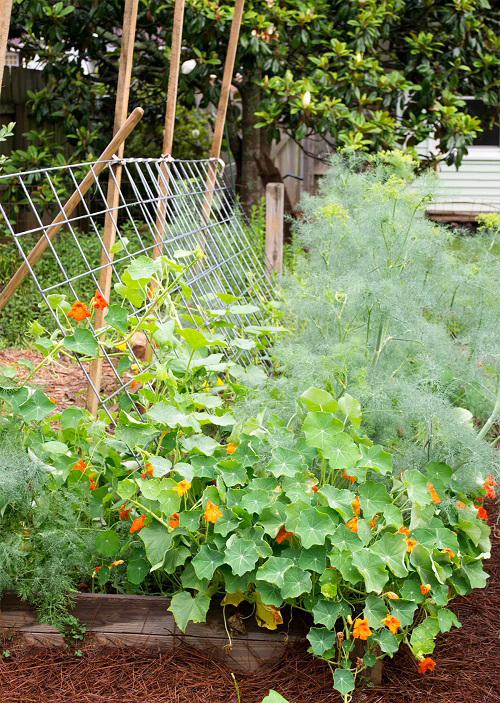
Consider companion planting by combining vines or climbers with other plants that can benefit from the shade or support they provide. For example, grow shade-loving plants beneath a pergola covered in climbing vines.
Go the Unconventional Way: Incorporate edible climbers like grapevines or passionflowers into your garden design. These plants not only provide aesthetic appeal but also offer fruits or flowers for consumption.
Check out these Companion Planting Combination Ideas
7. Pest and Disease Management

Monitor your vines regularly for signs of pests or diseases, and take appropriate measures to control them. This may include handpicking pests, applying organic insecticides, or using horticultural oils.
Go the Unconventional Way: Employ natural pest control methods such as companion planting with insect-repellent plants, attracting beneficial insects to the garden, or creating bird-friendly habitats. These methods can help maintain a healthy balance within the ecosystem.
Here are the Best Organic Pest Control Approaches Every Gardener Should Know
8. Winter Protection

- Mulching: Apply a layer of organic mulch around the base of the plants before winter sets in. This helps insulate the soil, retain moisture, and regulate soil temperature during the cold months.
- Watering: Before the ground freezes, provide a deep watering to ensure the plants are well-hydrated going into winter. This is particularly important for evergreen climbers that continue to lose moisture through their leaves during the colder months.
- Pruning: Prune your vines and climbers in late fall or early winter to remove dead, damaged, or diseased branches. This not only improves the plant’s appearance but also reduces the risk of pest and disease issues in the dormant season.
- Wrapping and Covering: For more delicate or less cold-hardy vines, consider wrapping them with burlap or horticultural fleece. This provides an extra layer of insulation and protects them from frost or extreme temperature fluctuations.
- Move the Plants: If you have container-grown vines or climbers, consider moving them to a protected area such as a shed, garage, or greenhouse during the coldest periods. This provides added protection against freezing temperatures and harsh winter conditions.
Check Best Climbers and Vines with Orange Flowers here
Go the Unconventional Way:
- Windbreaks: Create temporary windbreaks around your climbers using burlap or other materials. Erect these barriers on the windward side to shield the plants from strong winter winds that can cause desiccation and damage.
- Anti-desiccant Sprays: Apply an anti-desiccant spray, available at garden centers, to the foliage of evergreen climbers. This spray forms a protective coating that reduces water loss through the leaves and helps prevent winter drying.


